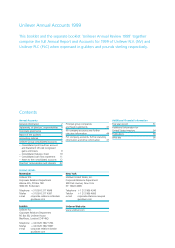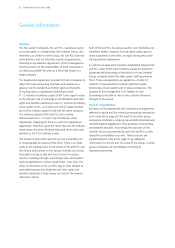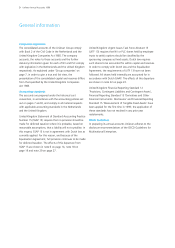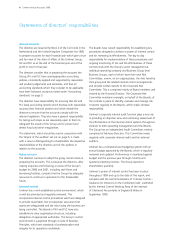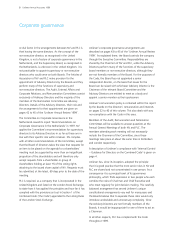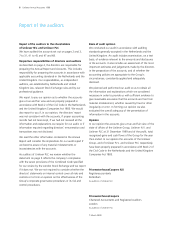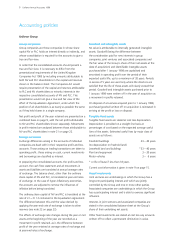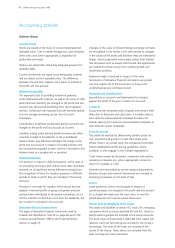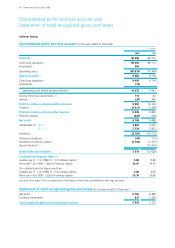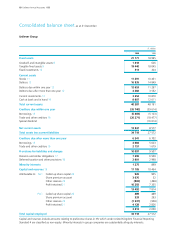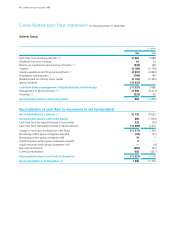Unilever 1999 Annual Report Download - page 2
Download and view the complete annual report
Please find page 2 of the 1999 Unilever annual report below. You can navigate through the pages in the report by either clicking on the pages listed below, or by using the keyword search tool below to find specific information within the annual report.General information
Unilever
The two parent companies, NV and PLC, operate as nearly
as is practicable as a single entity (the Unilever Group, also
referred to as Unilever or the Group). NV and PLC have the
same directors and are linked by a series of agreements,
including an Equalisation Agreement, which is designed so
that the position of the shareholders of both companies is
as nearly as possible the same as if they held shares in a
single company.
The Equalisation Agreement provides for both companies to
adopt the same accounting principles and requires as a
general rule the dividends and other rights and benefits
(including rights on liquidation) attaching to each
Fl. 12 nominal of ordinary capital of NV to be equal in value
at the relevant rate of exchange to the dividends and other
rights and benefits attaching to each £1 nominal of ordinary
share capital of PLC, as if each such unit of capital formed
part of the ordinary capital of one and the same company.
The ordinary capitals of NV and PLC are currently
denominated as Fl. 1.12 and 1.4p nominal per share
respectively. Applying the formula under the Equalisation
Agreement, therefore, gives the result that one NV ordinary
share enjoys the same dividend rights and other rights and
benefits as 6.67 PLC ordinary shares.
The shares of each of NV and PLC are not convertible into
or exchangeable for shares of the other. There is no fixed
parity in the trading prices of the shares of NV and PLC and
the relative share prices on the various markets can and do
fluctuate from day to day and hour to hour for various
reasons, including changes in exchange rates and taxation
regimes applicable to various shareholders. Over time, the
prices of the shares of NV and PLC stay in close relation to
each other because the dividends and other rights and
benefits attaching to those shares are fixed in the manner
referred to above.
Each of NV and PLC has always paid its own dividends and,
therefore, neither company has ever been called upon to
make a payment to the other, as might be required under
the Equalisation Agreement.
A contractual agreement has been established between NV
and PLC under which each company agrees on request to
guarantee the borrowings of the other or of any Unilever
Group company where the other parent itself guarantees
them. These arrangements are applied as a matter of
Unilever’s financial policy to certain significant public
borrowings of each parent and of group companies. The
purpose of the arrangement is for lenders of such
borrowings to be able to rely on the combined financial
strength of the Group.
Basis of consolidation
By reason of the operational and contractual arrangements
referred to above and the internal participating interests set
out in note 20 on page 20, NV and PLC and their group
companies constitute a single group under Netherlands and
United Kingdom legislation for the purposes of presenting
consolidated accounts. Accordingly the accounts of the
Unilever Group are presented by both NV and PLC as their
respective consolidated accounts. These accounts are
supplemented in note 33 on page 31 by additional
information for the NV and PLC parts of the Group in which
group companies are consolidated according to
respective ownership.
2Unilever Annual Accounts 1999

